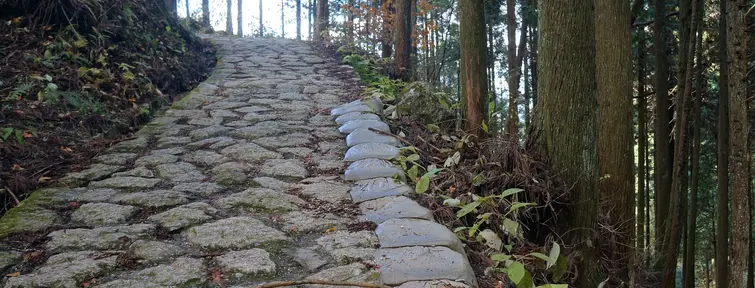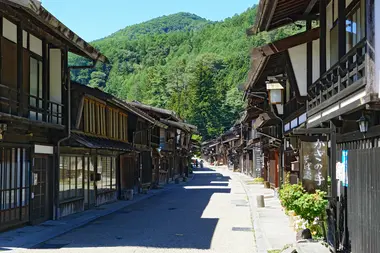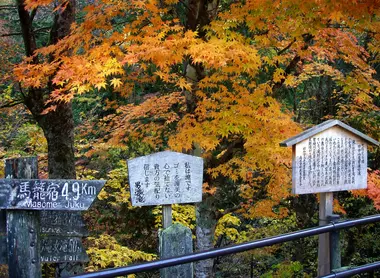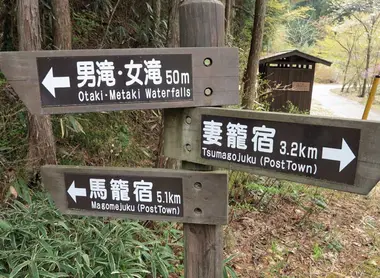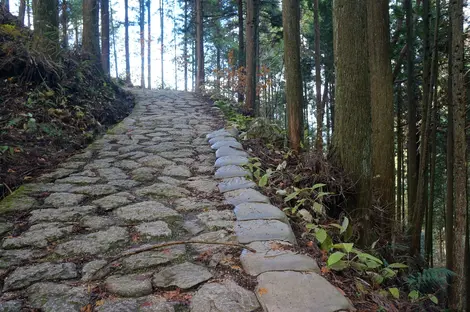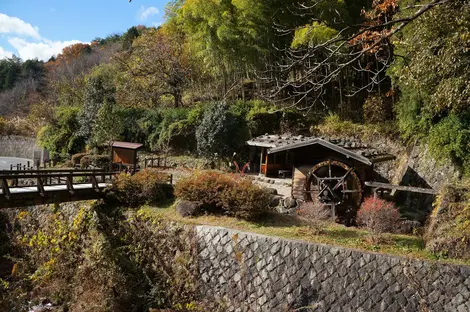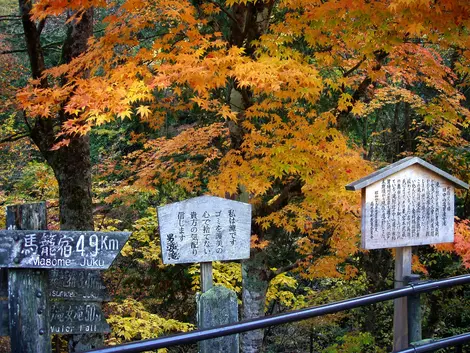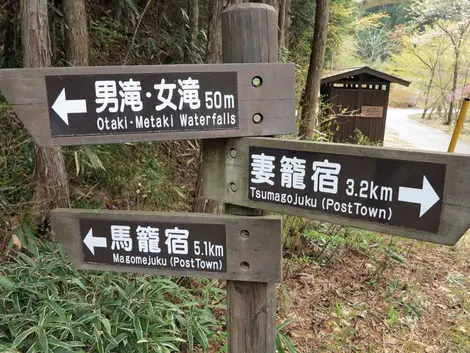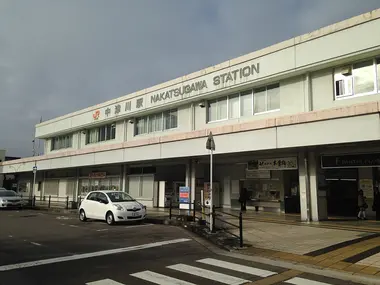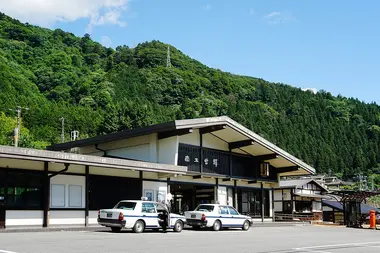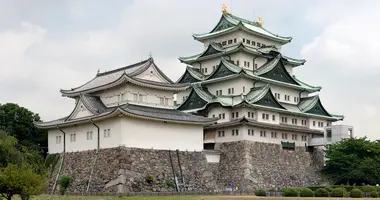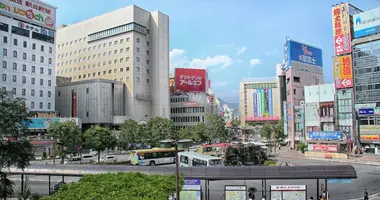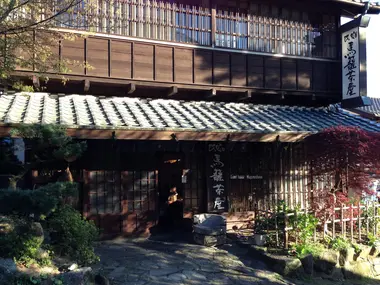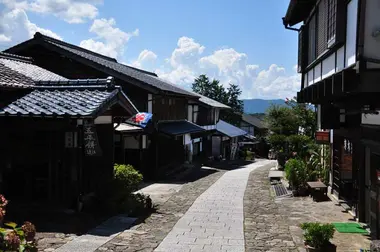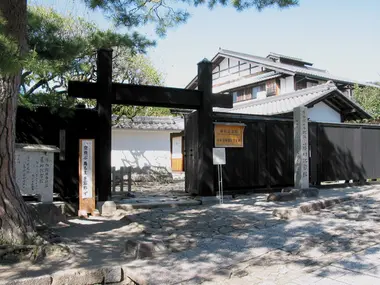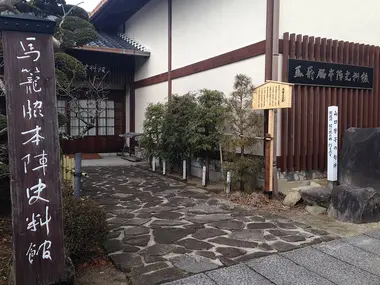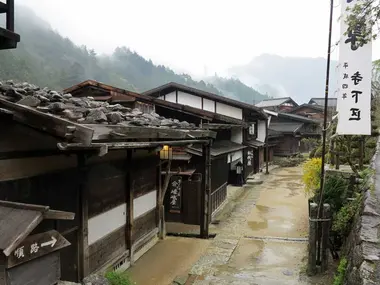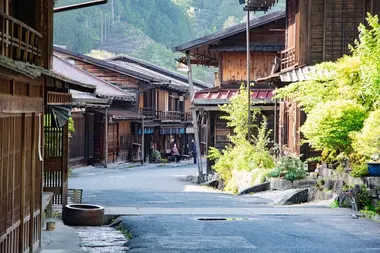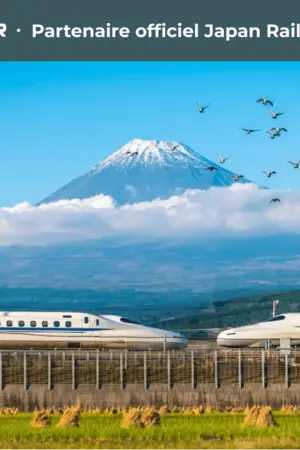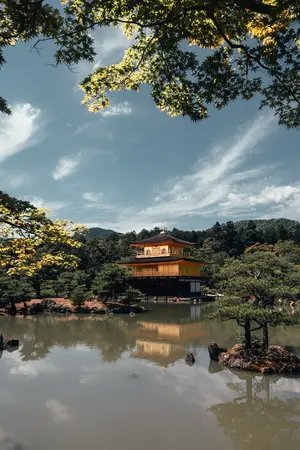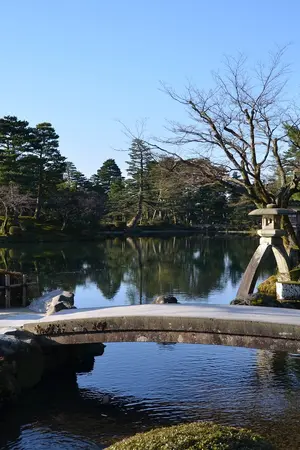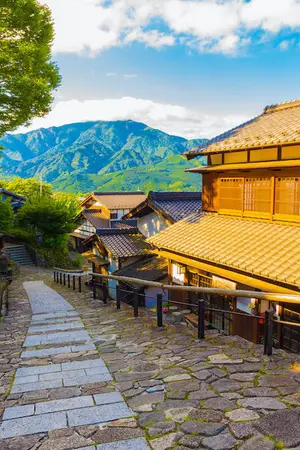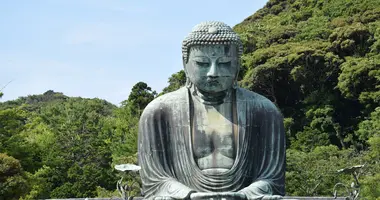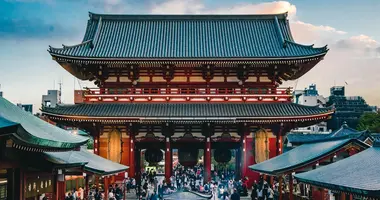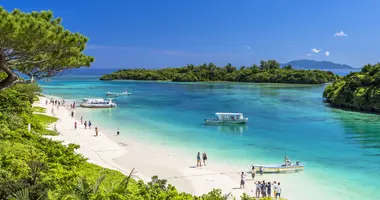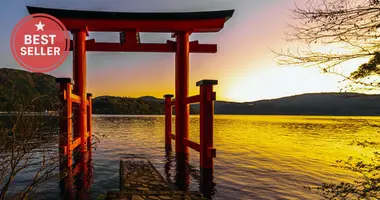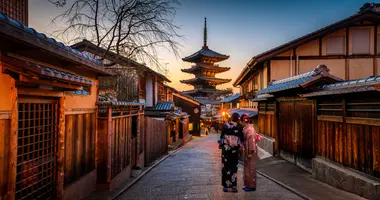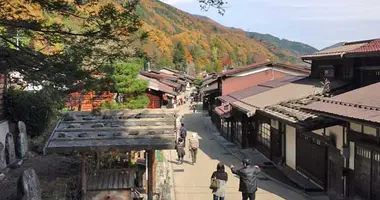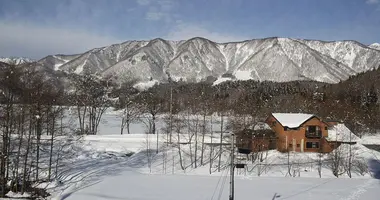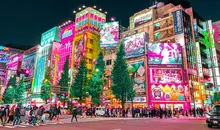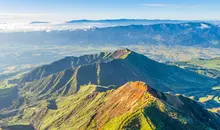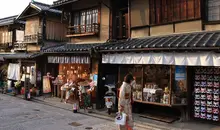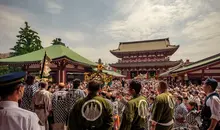Le sentier Magome-Tsumago : Se rendre et explorer le Nakasendo historique du Japon
- Publié le : 12/06/2025
- Par : Japan Experience
- Youtube
Nichée au cœur du Japon, la vallée de Magome Tsumago Kiso offre un voyage dans le temps captivant, le long de la piste historique de la Nakasendo.
À l'époque d'Edo au Japon, le sentier Nakasendo (également connu sous le nom de sentier Kisokaido) constituait l'un des principaux moyens de transport entre la capitale Kyoto et la grande ville d'Edo (aujourd'hui Tokyo). Traversant la vallée de Kiso, son importance historique est aujourd'hui bien reconnue, de nombreux itinéraires et routes modernes suivant son tracé.
Le Nakasendo, qui signifie "route des montagnes centrales", s'étend sur plus de 500 kilomètres. Cette route intérieure était privilégiée par de nombreux voyageurs, notamment les seigneurs daimyos, les marchands et les pèlerins, car elle permettait d'éviter les périlleuses traversées de rivières de la route côtière du Tokaido. Le Nakasendo a joué un rôle crucial dans l'histoire du Japon, en facilitant le commerce, la communication et les échanges culturels entre la capitale impériale et le siège du pouvoir des shoguns.
Sur toute sa longueur, le Nakasendo comptait 69 villes-postes où les voyageurs pouvaient se reposer, se réapprovisionner et changer de monture. Ces villes, connues sous le nom de juku, sont devenues des centres d'activité dynamiques, chacune développant un caractère et des traditions uniques. Aujourd'hui, plusieurs de ces villes ont été méticuleusement préservées ou restaurées, offrant aux visiteurs un aperçu du passé féodal du Japon.
À propos du sentier de randonnée Magome-Tsumago
Traversant des forêts et des champs luxuriants, le sentier de randonnée Magome-Tsumago est un parcours magnifiquement pittoresque qui semble tout droit sorti d'un film. Le sentier s'étend sur 8 kilomètres (environ 5 miles) ; cette randonnée relativement tranquille dure entre 2 et 4 heures et se situe à Gifu et Nagano, deux des préfectures les plus étendues du Japon, qui sont également toutes deux entièrement enclavées. Ces préfectures sont riches en montagnes ondulantes et en rivières.
Comme son nom l'indique, il passe par les villes de Magome et Tsumago, deux anciens relais de poste situés sur la piste Nakasendo et conservés tels qu'ils étaient à l'époque Edo, avec des structures en bois et des sentiers en pierre.
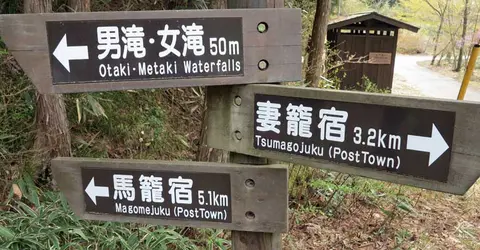
Panneaux de signalisation de la piste Magome-Tsumago
@Japan Visitor
Les villes-postes étaient des villages situés le long de la piste Nakasendo qui servaient de haltes aux voyageurs, avec des auberges, des lieux de ravitaillement et d'autres installations. Tsumago était le 42e village de poste et Magome le 43e sur un total de 69 villages de poste. Pour accéder à la piste Magome-Tsumago, il faut se rendre dans l'un de ces deux villages, puis entreprendre la randonnée jusqu'à l'autre.
Le sentier Magome-Tsumago se compose de paysages magnifiques et de quelques petits villages entre les deux villes principales. Le long du chemin, on trouve des sentiers de pierre tels qu'ils existaient à l'époque d'Edo, et des vues magnifiques sur la grande vallée de Kiso sont à découvrir tout au long du parcours. C'est surtout en automne, lorsque les feuilles prennent des teintes vibrantes de bordeaux et d'or, que l'atmosphère absorbe les randonneurs.
Planifier votre randonnée : Transport, logistique et conseils pratiques
Pour tirer le meilleur parti de votre aventure dans le Nakasendo, tenez compte des conseils suivants :
Le transport : Les points d'accès les plus pratiques sont les gares de Nakatsugawa (pour Magome) et de Nagiso (pour Tsumago), toutes deux situées sur la ligne principale JR Chuo. Depuis ces gares, des bus locaux desservent les villes postales respectives.
Service d'expédition des bagages: Un service pratique de transport de bagages est disponible entre Magome et Tsumago, ce qui vous permet de randonner confortablement sans porter de lourds bagages. Il vous suffit de déposer vos bagages au centre d'information touristique avant 11h30 et de les récupérer à votre destination après 13h. Plus d'informations sur ce service sont disponibles ici.
Hébergement : Pour une expérience authentique, envisagez de séjourner dans un ryokan ou minshuku traditionnel à Magome ou à Tsumago. Ces auberges offrent souvent le dîner et le petit-déjeuner, ce qui permet de goûter à la cuisine locale.
Meilleure période pour visiter : Le sentier est accessible toute l'année, mais le printemps (avril-mai) et l'automne (octobre-novembre) offrent le temps le plus agréable et des paysages époustouflants. L'été peut être chaud et humide, tandis que l'hiver peut voir des chutes de neige occasionnelles.
Articles indispensables : Des chaussures de marche confortables, de l'eau, des en-cas et de l'argent liquide (car de nombreux petits commerces de la région n'acceptent pas les cartes de crédit) sont indispensables pour votre randonnée.
Conseils pratiques : Veillez à avancer au rythme qui vous convient le mieux, surtout pendant les mois les plus chauds de l'été. Le long du sentier, il y a des cloches que les randonneurs doivent faire sonner, car elles sont là pour dissuader les ours. D'une manière générale, veillez à respecter la faune et les paysages naturels le long du chemin.
Se rendre à Magome et Tsumago
Magome se trouve à Gifu et Tsumago à Nagano, les deux villes étant situées à la frontière des deux préfectures. Le sentier peut être parcouru de l'une à l'autre de ces deux villes. Le choix du point de départ dépend de l'accès et de la ville la plus attrayante pour commencer et finir. Pour en savoir plus sur Magome et Tsumago en tant que destinations individuelles, cliquez ici.
Se rendre à Nagoya et Nagano pour accéder à la piste Magome-Tsumago
Nagoya et Nagano sont des destinations facilement accessibles depuis la capitale du Japon, Tokyo. Le trajet entre Tokyo et Nagoya dure environ 1 heure 35 minutes par le Tokaido Shinkansen. Le trajet entre Kyoto et Nagoya dure environ 30 minutes par le Shinkansen. Le trajet entre Tokyo et Nagano dure environ 1 heure 20 minutes via le Hokuriku Shinkansen.
Se rendre à Magome
La gare la plus proche de Magome est la gare JR Nakatsugawa sur la ligne principale JR Chuo qui relie Nagoya et Nagano.
L'option la plus rapide pour se rendre à cette gare est de prendre le Shinano Limited Express Train :
- 1 heure 15 minutes depuis Nagoya (2 870 yens).
- 2 heures à 2 heures 15 minutes depuis Nagano (5 610 yens).
Le Chuo Line Sub Rapid train est également une option :
1 heure 50 minutes à partir de Nagoya (1 340 yens).
Ces trains ne vont pas à Nagano et n'en partent pas.
Depuis la gare de Nakatsugawa, un bus part de l'arrêt n° 3. Il faut environ 25 minutes pour aller de la gare de Nakatsugawa à Magome (800 yens).
Pour ceux qui ont consacré leur temps dans la région à des randonnées pittoresques dans la nature, la marche de la gare de Nakatsugawa à Magome prend environ 2 à 3 heures, et la poursuite de la randonnée jusqu'à Tsumago prend encore 2 à 4 heures. Bien que cela prenne plus de temps, c'est une expérience formidable qui rappelle le voyage de ceux qui ont parcouru le Nakasendo à l'époque !
Se rendre à Tsumago
Tsumago est situé un peu au nord de Magome. La gare la plus proche est la gare JR Nagiso, également sur la ligne principale JR Chuo. On peut également y accéder en empruntant le Shinano Limited Express Train :
1 heure depuis Nagoya (3 220 yens)
2 heures depuis Nagano (5 170 yens).
Tsumago est peut-être un meilleur endroit pour commencer votre randonnée sur le sentier Magome-Tsumago si vous venez de Nagano.
Cependant, seuls quelques trains express limités s'arrêtent à la gare de Nagiso. L'un de ces trains Shinano Limited Express peut être pris jusqu'à la gare de Nakatsugawa, où un transfert peut être effectué pour un train local jusqu'à la gare de Nagiso.
Depuis la gare de Nagiso, un bus se rend au centre de Tsumago en 7 à 10 minutes (300 yens). Cependant, ces bus sont moins fréquents et n'ont pas les mêmes horaires que ceux qui vont de la gare de Nakatsugawa à Magome, alors vérifiez bien les horaires avant de partir !
Si les horaires des bus ne correspondent pas à votre itinéraire, il y a également des taxis à la gare de Nagiso. Le trajet dure de 5 à 10 minutes et coûte de 2 000 à 3 000 yens. La marche est également une excellente option pour aller de la gare de Nagiso à Tsumago. Elle prend un peu moins d'une heure et constitue un excellent précurseur de la randonnée Magome-Tsumago.
Au-delà du sentier : Attractions et expériences à Magome et Tsumago
Bien que la randonnée elle-même soit un point fort, Magome et Tsumago proposent toutes deux des attractions et des expériences supplémentaires. Découvrez plus d'informations sur chaque ville et sur ce qu'il y a à y faire !
Explorer Magome
Magome est la plus animée des deux villes, avec un afflux plus important de visiteurs. Elle peut constituer un bon point de départ pour le sentier Magome-Tsumago, car elle est plus facile d'accès depuis Nagoya et permet aux voyageurs de passer d'un endroit plus animé à l'atmosphère plus calme de Tsumago.
Cependant, il y a beaucoup de choses à voir à Magome avant de partir en randonnée. Voici quelques-unes de ses attractions les plus remarquables :
Achetez vos billets de train pour Nagoya et Nagano !
- Musée commémoratif Toson : Dédié à l'écrivain Shimazaki Toson, originaire de la ville de Magome.
- Magome-juku Honjin : une auberge restaurée qui accueillait des fonctionnaires de haut rang à l'époque de l'apogée de la piste.
- Magome Chaya : Une ancienne maison d'hôtes où l'on peut se restaurer et se rafraîchir. Passez la nuit sur place pour vivre une expérience authentique et traditionnelle !
La ville de Magome est réputée pour un certain nombre de spécialités. Il s'agit notamment de l'oyaki, une boulette de forme similaire à un bagel avec différentes garnitures, et du goheimochi, des boules de mochi grillées et glacées avec une sauce spéciale et garnies de noix.
À la découverte de Tsumago
Bien qu'elle ne fasse pas l'objet d'un tourisme aussi actif que Magome, Tsumago est une charmante escapade qui a son propre attrait. Il s'agit en fait de l'une des villes postales les mieux préservées de la piste Nakasendo. En fait, la ville a été conçue de manière à ce que les lignes électriques et téléphoniques soient cachées, et la route principale ne permet pas l'accès en voiture. Voici quelques attractions à découvrir à Tsumago :
- Rekishi Shiryokan : Un musée qui documente l'histoire de la région, de la piste Nakasendo et de la vallée de Kiso dans son ensemble.
- Waki-Honjin Okuya : Préservée depuis la période Edo, cette maison d'hôtes historique servait l'élite de l'époque.
- Chutes d'eau d'Otake et de Medaki : Situées juste à l'extérieur du centre de Tsumago, ces chutes d'eau servaient autrefois de bains, l'un pour les hommes et l'autre pour les femmes.
Tsumago Juku est connu pour son artisanat en bois qui utilise les ressources locales dans sa production. Connu sous le nom de Nagiso Rokuro-zaiku, il s'agit d'une forme de sculpture sur bois utilisant des rouets et des manipulations. Diverses marchandises peuvent être achetées dans toute la ville.
Prolongez votre aventure au Nakasendo : Autres possibilités de randonnées dans les environs
Pour ceux qui souhaitent explorer davantage le Nakasendo, voici d'autres possibilités de randonnées :
- De Yabuhara à Narai : Cette randonnée de 6 km permet de franchir le col de Torii, le point le plus élevé du Nakasendo
- Nagiso à Nojiri : Un tronçon moins fréquenté de 16 km qui offre une randonnée plus difficile à travers des paysages ruraux
- De Karuizawa à Yokokawa : ce tronçon de 17 kilomètres dans la préfecture de Nagano présente des paysages variés et des sites historiques
Pour un voyage plus complet, envisagez de vous joindre à des circuits organisés de Circuits Nakasendo qui couvrent plusieurs sections du sentier sur plusieurs jours.
Préserver la tradition : Le rôle du tourisme dans l'entretien des routes historiques du Japon
La préservation et la promotion de la piste du Nakasendo et de ses villes-postes jouent un rôle crucial dans le maintien du patrimoine culturel du Japon. Le tourisme est devenu une activité économique vitale pour ces communautés rurales, contribuant à financer les efforts de restauration et à maintenir en vie l'artisanat et les coutumes traditionnelles.
Les visiteurs de la vallée de Kiso contribuent à cette préservation en
- En soutenant les entreprises et les artisans locaux
- En séjournant dans des hébergements traditionnels
- En participant à des expériences culturelles et à des ateliers
- En faisant connaître l'importance historique de la région
En explorant la vallée de Magome Tsumago Kiso, n'oubliez pas que vous n'êtes pas seulement témoin de l'histoire, mais que vous participez activement à sa préservation pour les générations futures. En marchant attentivement le long de l'ancien Nakasendo, vous contribuez à faire en sorte que ce remarquable élément du patrimoine japonais continue de prospérer dans le monde moderne.
